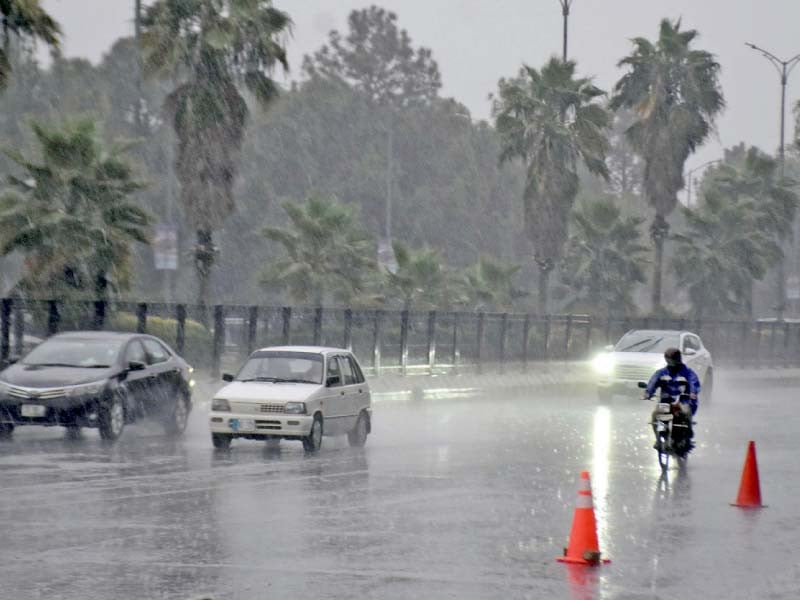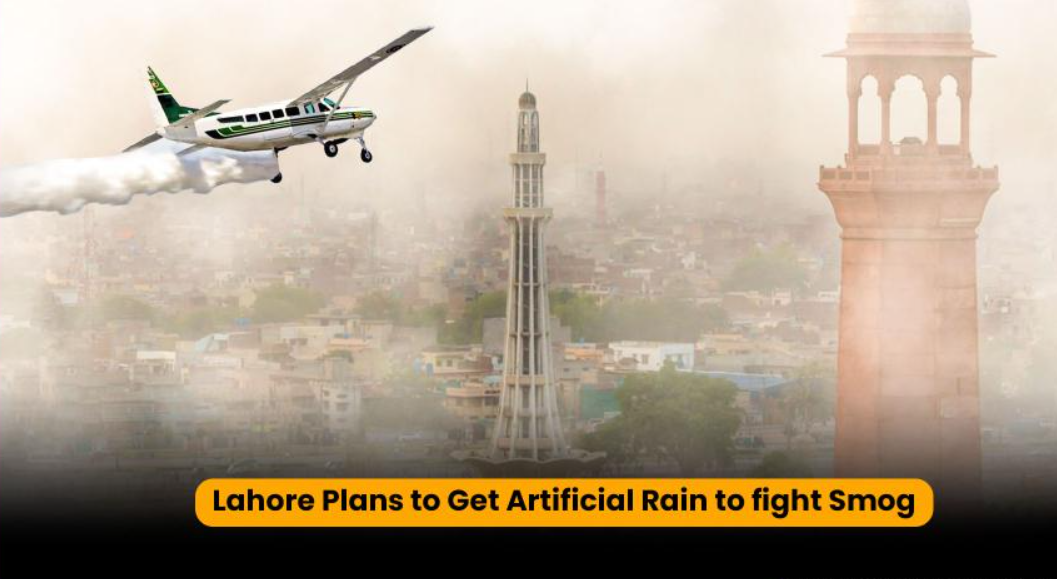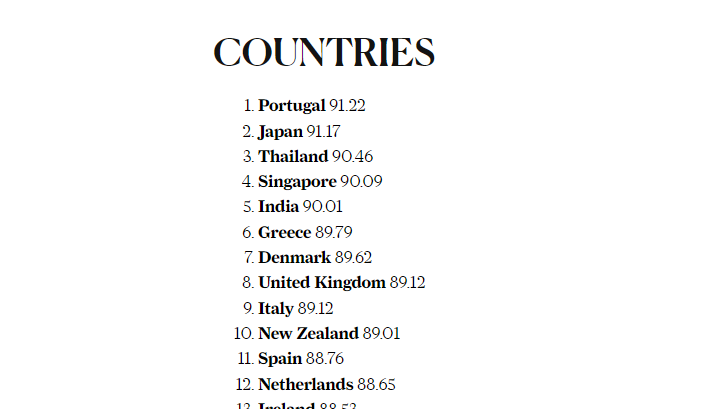According to the provincial government, artificial rain has been used for the first time in Pakistan to address the hazardous pollution levels in the megacity of Lahore. On Saturday, planes equipped with cloud-seeding technology flew over the eastern city, frequently ranked among the worst places in the world for air pollution and smog.
Planes equipped with cloud-seeding equipment flew on Saturday over the eastern city, often ranked one of the worst places globally for air pollution (Smog).
Artificial Rain in Lahore
“It drizzled in at least 10 areas of Lahore,” caretaker chief minister of Punjab, Mohsin Naqvi, told reporters, adding that the authorities were monitoring the impact of artificial rain in a radius of 15km (nine miles).
Air quality in Lahore has been particularly bad in the last few weeks and the Punjab government employed several tactics including the early closure of businesses and keeping schools off for two extra days to help improve the air quality – but nothing worked.
The “gift” was provided by the United Arab Emirates, Naqvi said.
“Teams from the UAE arrived here about 10 to 12 days ago with two planes. They used 48 flares to create rain,” he said.
![Pakistan uses First time artificial rain to fight pollution SMOG 2 Commuters make their way along a street amid smog in Lahore on November 17, 2023. [Arif ALI / AFP]](https://www.aljazeera.com/wp-content/uploads/2023/12/lahor-2-1702745563.jpeg?w=770&resize=770%2C512&quality=80)
Naqvi said the team would be able to assess the experiment’s effects by Saturday night.
The UAE has increasingly used cloud seeding, sometimes referred to as artificial rain or blue-skying, to create rain in its arid expanse.
In the cloud-seeding process, silver iodide, a yellowish salt, is burned in clouds in a compound with acetone to encourage condensation to form as rain.
Naqvi reassured the public of the safety of the artificial rain, citing more than 1,000 annual missions by the UAE and similar technologies used in dozens of countries, including the United States, China and India.
Lahore’s toxic smog
Experts have said that even very modest rain effectively reduces pollution.
On Saturday, Lahore recorded PM2.5 pollutant levels as hazardous, exceeding the World Health Organization’s safety limits by more than 66 times. These microparticles, which can cause cancer, enter the bloodstream through the lungs.

Air pollution has worsened in Pakistan in recent years, as a mixture of low-grade diesel fumes, smoke from seasonal crop burn off and colder winter temperatures coalesce into stagnant clouds of smog.
Lahore has suffered the most from the toxic smog, choking the lungs of more than 11 million residents in Lahore during the winter season.
Breathing the poisonous air has catastrophic health consequences.
Prolonged exposure can trigger strokes, heart disease, lung cancer and respiratory diseases, according to the WHO.
Pakistani authorities attribute air pollution and smog in the central Punjab province to several factors, including industrial emissions, smoke from brick kilns and vehicles, and the burning of crop residue and general waste.
Naqvi said that there would be more instances of artificial rain in the city, in which smog towers – large-scale air purifiers designed to capture pollution – would also be installed in the coming weeks.
Growing industrialisation in South Asia in recent decades has driven an increase in pollutants emanating from factories, construction activity and vehicles in densely populated areas.
The issue worsens during the cooler autumn and winter months when temperature inversions occur. These inversions trap warm air above and prevent it from rising, causing pollutants to remain closer to the ground.
Rising air pollution can cut life expectancy by more than five years per person in South Asia, one of the world’s most polluted regions, according to a report published in August which flagged the growing burden of hazardous air on health.
Pakistan is responsible for less than 1 percent of global carbon emissions but is among the top 10 most climate-vulnerable nations.
Article Courtesy: https://www.aljazeera.com/








